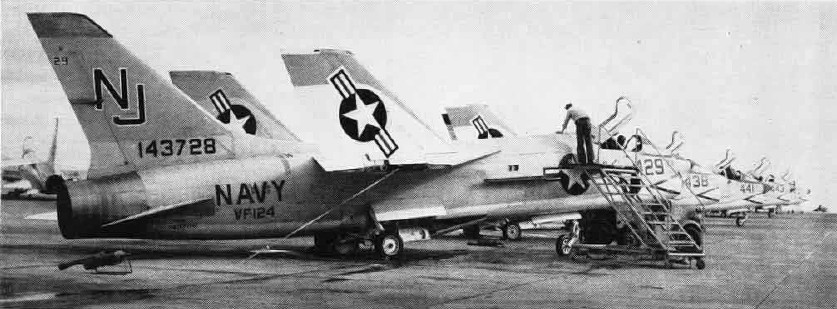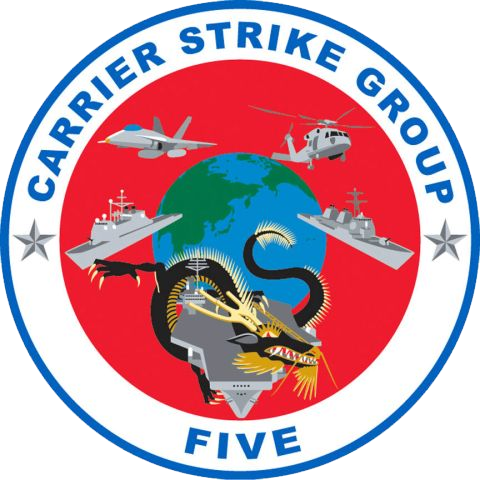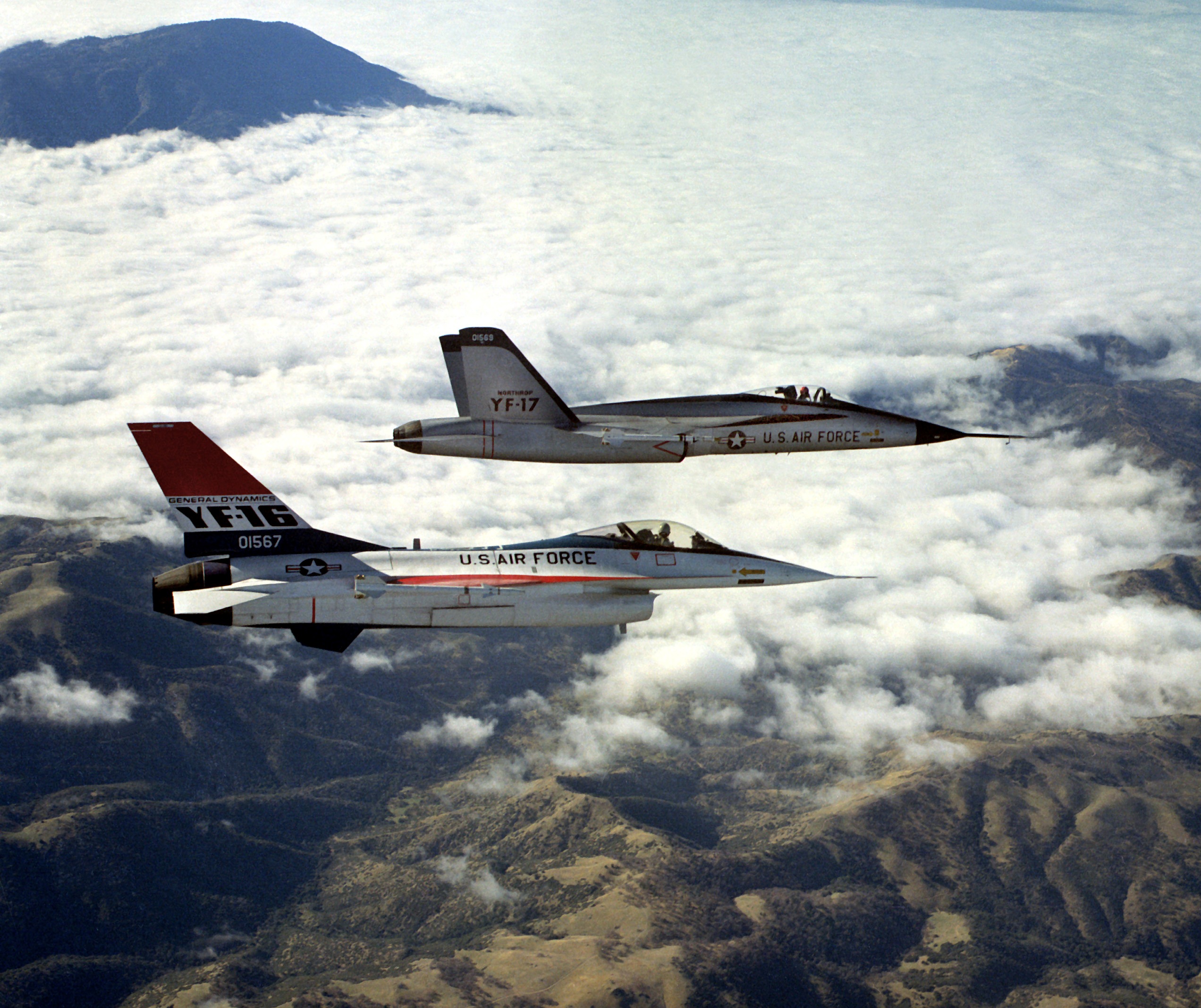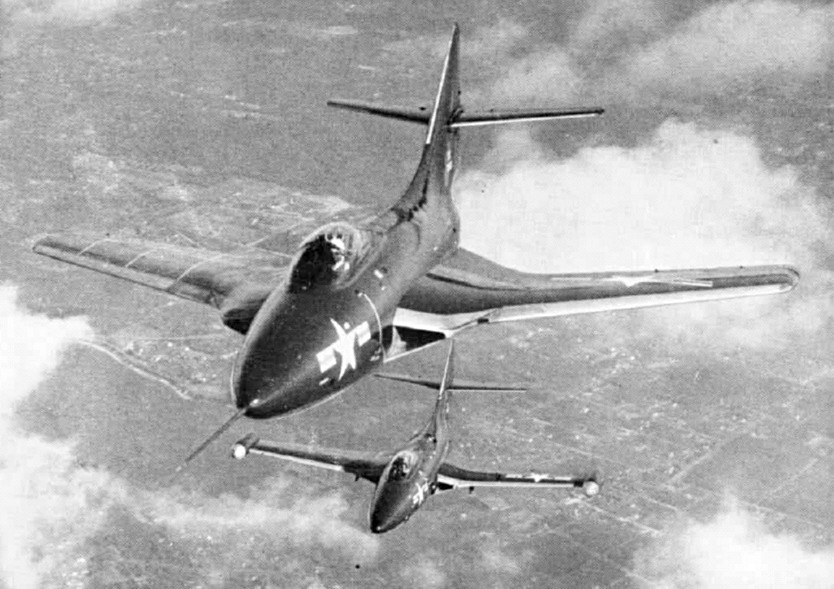|
VF-124 (1950-8)
Fighter Squadron 124 or VF-124 ''Gunfighters'' was a fleet replacement squadron (FRS) of the United States Navy. Originally established on 16 August 1948 as VF-53, it was redesignated VF-124 at NAS Moffett Field on 11 April 1958 due to a need for an increased number of flight training squadrons, itself necessary because of introduction of swept wing fighters into Navy service. In 1961, the squadron relocated to NAS Miramar, California, which would become the U.S. Pacific Fleet's Master Jet Base for fighter aircraft. The squadron's task as an FRS was the training of pilots for the F-8 Crusader, and later the training of pilots and radar intercept officers for the F-14 Tomcat. The squadron was disestablished on 30 September 1994 and its F-14 FRS mission consolidated with its U.S. Atlantic Fleet counterpart, VF-101, at NAS Oceana, Virginia. History Korean War VF-53 equipped with F4U-4B Corsairs was assigned to Carrier Air Group 5 aboard from 1 May to 1 December 1950 and was ... [...More Info...] [...Related Items...] OR: [Wikipedia] [Google] [Baidu] |
United States Navy
The United States Navy (USN) is the naval warfare, maritime military branch, service branch of the United States Department of Defense. It is the world's most powerful navy with the largest Displacement (ship), displacement, at 4.5 million tons in 2021. It has the world's largest aircraft carrier fleet, with List of aircraft carriers in service, eleven in service, one undergoing trials, two new carriers under construction, and six other carriers planned as of 2024. With 336,978 personnel on active duty and 101,583 in the Ready Reserve, the U.S. Navy is the third largest of the United States military service branches in terms of personnel. It has 299 deployable combat vessels and about 4,012 operational aircraft as of 18 July 2023. The U.S. Navy is one of six United States Armed Forces, armed forces of the United States and one of eight uniformed services of the United States. The United States Navy traces its origins to the Continental Navy, which was established during ... [...More Info...] [...Related Items...] OR: [Wikipedia] [Google] [Baidu] |
Carrier Air Wing Five
Carrier Air Wing Five (CVW-5) is a United States Navy aircraft carrier air wing based at Marine Corps Air Station Iwakuni. The air wing is attached to the aircraft carrier . It was initially formed in 1943. It has participated in the Second World War, the Korean War, the Gulf War, Operation Southern Watch, the War in Afghanistan (2001–present), War in Afghanistan, and the War in Iraq. The wing's officially stated mission is 'To conduct carrier air warfare operations and assist in the planning, control, coordination and integration of seven air wing squadrons in support of carrier air warfare including; Interception and destruction of enemy aircraft and missiles in all-weather conditions to establish and maintain local air superiority. All-weather offensive air-to-surface attacks, Detection, localization, and destruction of enemy ships and submarines to establish and maintain local sea control. Aerial photographic, sighting, and electronic intelligence for naval and joint operati ... [...More Info...] [...Related Items...] OR: [Wikipedia] [Google] [Baidu] |
F/A-18 Hornet
The McDonnell Douglas F/A-18 Hornet is an all-weather supersonic, twinjet, twin-engine, carrier-based aircraft, carrier-capable, Multirole combat aircraft, multirole combat aircraft, designed as both a Fighter aircraft, fighter and attack aircraft (hence the F/A 1962 United States Tri-Service aircraft designation system, designation). Designed by McDonnell Douglas and Northrop Corporation, Northrop, the F/A-18 was derived from the latter's YF-17 in the 1970s for use by the United States Navy and United States Marine Corps, Marine Corps. The Hornet is also used by the air forces of several other nations, and formerly by the U.S. Navy's Flight Demonstration Squadron, the Blue Angels. The F/A-18 was designed to be a highly versatile aircraft due to its avionics, glass cockpit, cockpit displays, and excellent aerodynamic characteristics, with the ability to carry a wide variety of weapons. The aircraft can perform escort fighter, fighter escort, fleet air defense, suppression of en ... [...More Info...] [...Related Items...] OR: [Wikipedia] [Google] [Baidu] |
Commandant Of The United States Marine Corps
The commandant of the Marine Corps (CMC) is normally the highest-ranking officer in the United States Marine Corps. It is a four-star general position and a member of the Joint Chiefs of Staff. Joint Chiefs of Staff: composition; functions. The CMC reports directly to the secretary of the Navy and is responsible for ensuring the organization, policy, plans, and programs for the Marine Corps as well as advising the president, the secretary of defense, the National Security Council, the Homeland Security Council, and the secretary of the Navy on matters involving the Marine Corps. Under the authority of the secretary of the Navy, the CMC designates Marine personnel and resources to the commanders of unified combatant commands. Combatant commands: administration and support The commandant performs all other functions prescribed in Section 8043 in Title 10 of the United States Code Commandant of the Marine Corps or delegates those duties and responsibilities to other officers i ... [...More Info...] [...Related Items...] OR: [Wikipedia] [Google] [Baidu] |
VFA-2
Strike Fighter Squadron 2 (VFA-2) also known as the "Bounty Hunters" is a United States Navy F/A-18F Super Hornet strike fighter squadron based at Naval Air Station Lemoore, California. Their tail code is NE and their callsign is "Bullet". They are attached to Carrier Air Wing 2 (CVW-2), a composite unit made up of a wide array of aircraft performing a variety of combat and support missions that deploy aboard the . History Four distinct squadrons have been designated VF-2. Officially, the US Navy does not recognize a direct lineage with disestablished squadrons if a new squadron is formed with the same designation. Often, the new squadron will assume the nickname, insignia, and traditions of the earlier squadrons. 1970s VF-2, known as the "Bounty Hunters," was established on 14 October 1972 flying the Grumman F-14 Tomcat, F-14A Tomcat. VF-2 completed aircrew training and received its first Tomcats in July 1973, attaining full strength of 12 F-14As in the spring of 1974. VF-2's ... [...More Info...] [...Related Items...] OR: [Wikipedia] [Google] [Baidu] |
VF-1
Fighter Squadron 1 (VF-1) was a fighter squadron of the United States Navy. Originally established on 14 October 1972 it was disestablished on 30 September 1993. It was the fifth US Navy squadron to be designated VF-1. Known as the "Wolfpack" the squadron saw combat during the Vietnam War and Operation Desert Storm. The squadron was de-activated and its personnel reassigned in 1993 when its carrier, , was decommissioned. Operational history VF-1, ''Wolfpack'', was established on 14 October 1972 at NAS Miramar, at the same time as VF-2, and these units were the first operational fighter squadrons equipped with the Grumman F-14 Tomcat. VF-1 received the first F-14A's on 1 July 1973. The squadron's insignia was a red wolf's head designed by Grumman Commercial Artist, George M. Kehew, who himself is a World War II combat veteran. The squadron insignia is registered in the U.S. Library of Congress. VF-1 was assigned to Carrier Air Wing 14 (CVW-14) aboard . Their first cruise cam ... [...More Info...] [...Related Items...] OR: [Wikipedia] [Google] [Baidu] |
VFP-63
VFP-63 was a Light Photographic Squadron of the U.S. Navy. Originally established as Composite Squadron Sixty-One (VC-61) on 20 January 1949, it was redesignated as Fighter Photographic Squadron (VFP-61) on 2 July 1956. Redesignated as Composite Photographic Squadron Sixty-Three (VCP-63) on 1 July 1959 and finally redesignated as Light Photographic Squadron Sixty-Three (VFP-63) on 1 July 1961. The squadron provided a detachment of reconnaissance planes for each of the Carrier Air Wings of the U.S. Pacific Fleet. The squadron was disestablished on 30 June 1982. Operational history Korean War VC-61 detachments of F4U-4/5P Corsairs served until mid-1951 when they were replaced by the F9F-2P Cougar. Vietnam VFP-63 was the only Navy combat unit with elements continuously deployed throughout the Vietnam War. Detachments of RF-8A/G Crusaders served the following deployments: *17 October 1963 – 20 July 1964 Detachment C . On 6 June 1964 RF-8A uNo 146823was shot down by an ... [...More Info...] [...Related Items...] OR: [Wikipedia] [Google] [Baidu] |
F-4 Phantom II
The McDonnell Douglas F-4 Phantom II is an American tandem two-seat, twin-engine, all-weather, long-range supersonic jet interceptor and fighter-bomber that was developed by McDonnell Aircraft for the United States Navy.Swanborough and Bowers 1976, p. 301. It entered service with the Navy in 1961, then was adopted by the United States Marine Corps, and the United States Air Force, and within a few years became a major part of their air arms. A total of 5,195 Phantoms were built from 1958 to 1981, making it the most-produced American supersonic military aircraft in history and a signature combat aircraft of the Cold War."F-4 Phantoms Phabulous 40th" Boeing. Retrieved : 27 November 2012.. The Phantom is a large fighter with a top spe ... [...More Info...] [...Related Items...] OR: [Wikipedia] [Google] [Baidu] |
VF-121
VF-121 (Fighter Squadron 121) of the United States Navy was a former Pacific Fleet Replacement Air Group (RAG) unit. Originally established on 1 July 1946, as VF-781, it was redesignated as VF-121 on 4 February 1953 and disestablished on 30 September 1980. On 11 April 1958 it changed duty from Fleet Squadron to Fleet Replacement Squadron and was later charged with the training of Navy F-4 Phantom flight and maintenance crews. Operational history Fighting Squadron On 1 July 1946, VF-781, ''The Pacemakers'' were stationed at Naval Air Station Los Alamitos. On 20 July 1950, VF-781 was based at NAS North Island. In January 1951 the squadron moved to NAS Miramar. VF-781 served on board with Air Group 102 (CVG-102) flying F9F-2B Panthers from 10 May to 17 December 1951. VF-781's next cruise was on board flying with Air Group 102 (CVG-102) flying F9F-5's over Korea from 15 September 1952 to 18 May 1953. On 18 November 1952, VF-781 scored its first MiG-15 kills by Royce Willia ... [...More Info...] [...Related Items...] OR: [Wikipedia] [Google] [Baidu] |
F9F Cougar
The Grumman F9F/F-9 Cougar is a carrier-based jet-powered fighter aircraft designed and produced by the American aircraft manufacturer Grumman. It was developed during the early 1950s on behalf of the United States Navy (US Navy) and United States Marine Corps (USMC), which were keen to quickly introduce a naval fighter equipped with a swept wing. Grumman's design team decided to adapt its earlier F9F Panther, replacing the straight wing of the Panther with a new swept wing. Thrust was also increased with the installation of a newer and more powerful engine. Nevertheless, the aircraft remained limited to subsonic speeds. The first prototype (XF9F-6), which was produced by modifying an existing Panther, performed its maiden flight on 20 September 1951. The Navy considered the Cougar to be an updated version of the Panther, despite having a different official name, and thus Cougars started off from F9F-6. During December 1952, the F9F-6 was introduced to service, VF-32 being t ... [...More Info...] [...Related Items...] OR: [Wikipedia] [Google] [Baidu] |
Lockheed T-33
The Lockheed T-33 Shooting Star (or T-Bird) is an American subsonic jet trainer. It was produced by Lockheed and made its first flight in 1948. The T-33 was developed from the Lockheed P-80/F-80 starting as TP-80C/TF-80C in development, then designated T-33A. It was used by the U.S. Navy initially as TO-2, then TV-2, and after 1962, T-33B. The last operator of the T-33, the Bolivian Air Force, retired the type in July 2017, after 44 years of service. Design and development The T-33 was developed from the Lockheed P-80/F-80 by lengthening the fuselage by slightly more than 3 feet (1 m) and adding a second seat, instrumentation, and flight controls. It was initially designated as a variant of the P-80/F-80, the TP-80C/TF-80C. Design work on the Lockheed P-80 began in 1943, with the first flight on 8 January 1944. Following on the Bell P-59, the P-80 became the first jet fighter to enter full squadron service in the United States Army Air Forces. As more advanced je ... [...More Info...] [...Related Items...] OR: [Wikipedia] [Google] [Baidu] |









